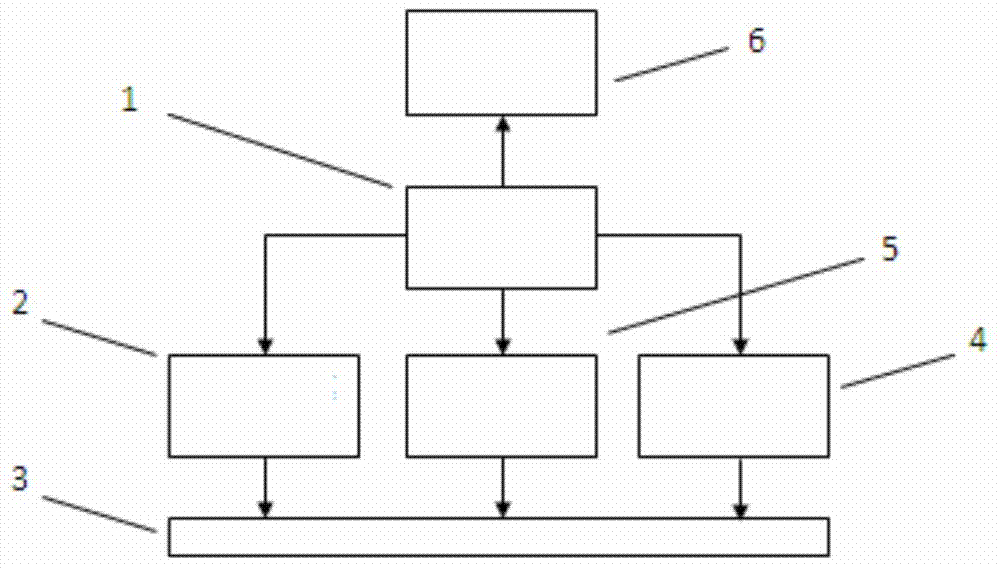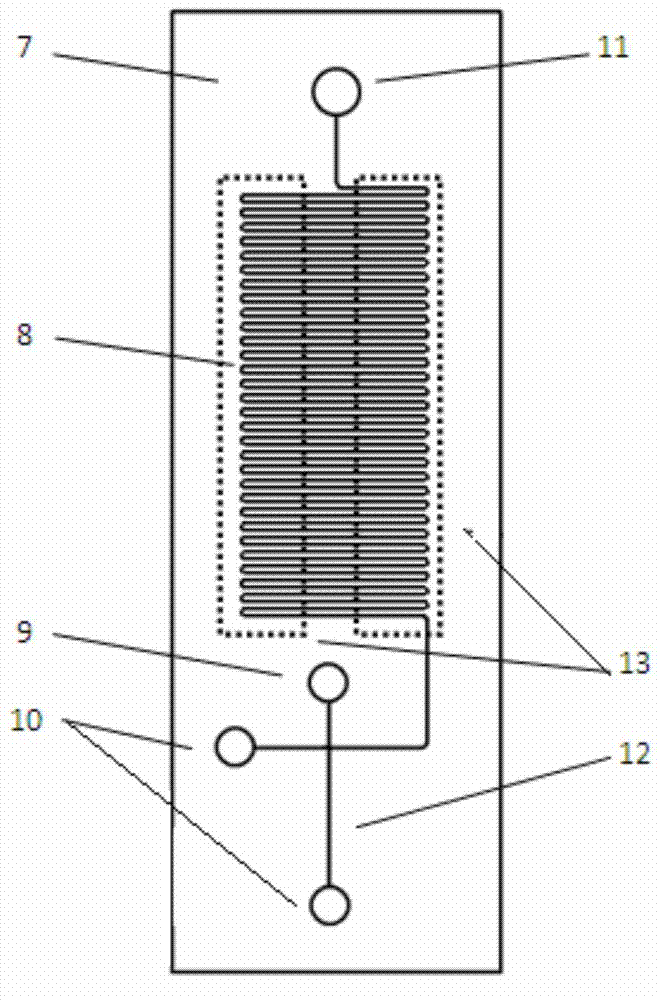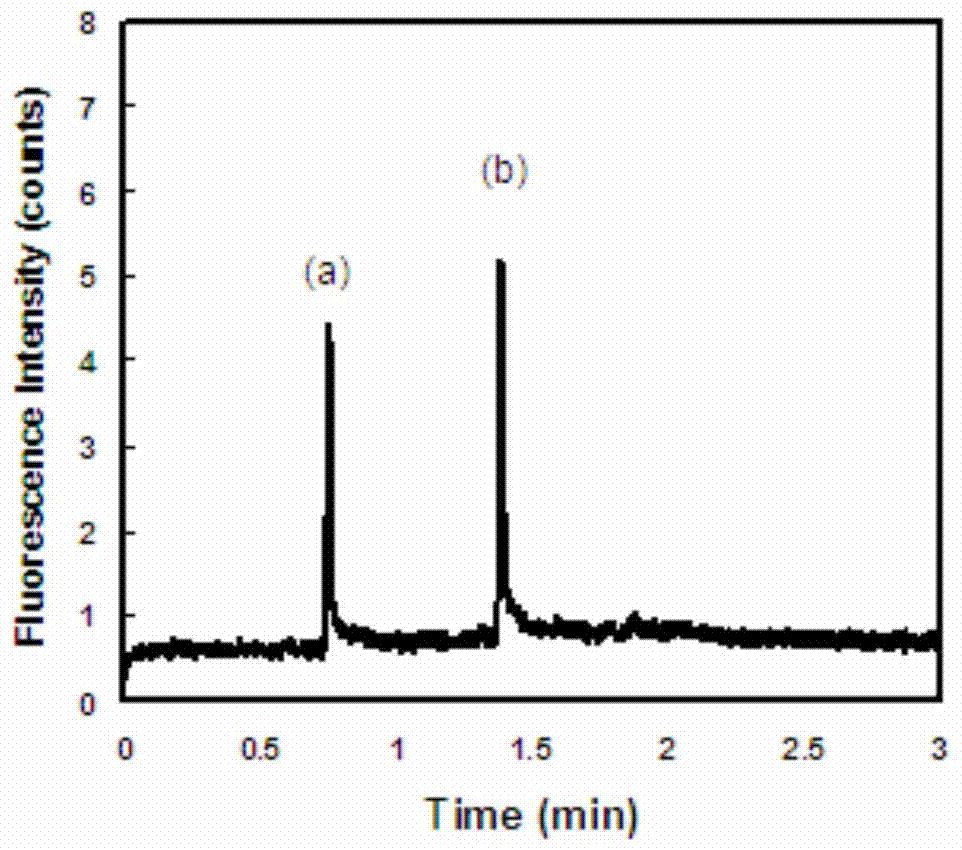PCR (Photo-conductive Relay) and capillary electrophoresis integrated micro-fluidic chip and rapid pathogenic bacteria detection device adopting chip
A technology of microfluidic chip and capillary electrophoresis, which is applied in enzymology/microbiology devices, biochemical cleaning devices, biochemical equipment and methods, etc. It can solve the problem of increasing operational errors and sample contamination, and it is difficult to reduce reagent and labor costs. The cumbersome operation process and other problems can be achieved to reduce the risk of sample contamination, reduce hardware purchase costs, and simplify manual operations.
- Summary
- Abstract
- Description
- Claims
- Application Information
AI Technical Summary
Problems solved by technology
Method used
Image
Examples
Embodiment 1
[0042] Example 1. A microfluidic chip integrated with PCR and capillary electrophoresis
[0043] The microfluidic chip integrated with PCR and capillary electrophoresis is 76mm long, 22mm wide, and 2mm thick. It is formed by bonding and sealing the upper and lower layers of PDMS substrates. Both the thickness of the upper and lower substrates are 1 mm. The lower substrate contains PCR reaction channels, CE separation channels and groove structures. The upper substrate contains hole structures whose positions correspond to the groove structures of the lower substrate.
[0044] Wherein, the structure of the lower substrate 7 is as follows figure 2 shown. The cross-sectional size of the PCR channel 8 is 0.1mm×0.1mm, and every two adjacent linear parts form a group, which can complete one PCR reaction, and there are 30 groups in total. The CE channel 12 has a cross-sectional dimension of 0.1 mm×0.1 mm and a total length of 16 mm. The linear part at the end of the PCR channel c...
Embodiment 2
[0046] Example 2. Rapid detection of Porphyromonas Gingivalis (Pg) using a microfluidic chip and a detection device.
[0047] The gingival sulcus was wiped with a hygroscopic paper tip (Tianjin Dayading Medical Instrument Co., Ltd.) to obtain gingival crevicular fluid containing oral bacteria. Soak the tip part of the absorbent paper tip stained with gingival crevice fluid in the lysing solution PBS (Sigma-Aldrich, USA) for 3 minutes. PCR channel 8 of the microfluidic chip was filled with PCR reaction solution SpeedSTAR HS DNA Polymerase (TAKARA, Japan), and CE channel 12 was filled with separation solution (hydroxyethyl cellulose solution). Insert the chip into the detection device, inject 1 μL of lysate containing oral bacterial DNA into the chip injection pool 15, turn on the device, and automatically complete the subsequent steps. Under the order of the data processing and control module 1, the temperature control module 5 makes the temperature control sheet 13 reach 95°C...
PUM
| Property | Measurement | Unit |
|---|---|---|
| thickness | aaaaa | aaaaa |
Abstract
Description
Claims
Application Information
 Login to View More
Login to View More - R&D
- Intellectual Property
- Life Sciences
- Materials
- Tech Scout
- Unparalleled Data Quality
- Higher Quality Content
- 60% Fewer Hallucinations
Browse by: Latest US Patents, China's latest patents, Technical Efficacy Thesaurus, Application Domain, Technology Topic, Popular Technical Reports.
© 2025 PatSnap. All rights reserved.Legal|Privacy policy|Modern Slavery Act Transparency Statement|Sitemap|About US| Contact US: help@patsnap.com



